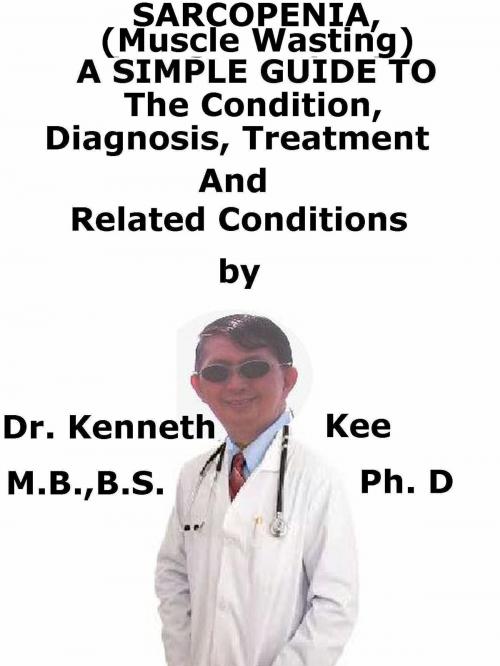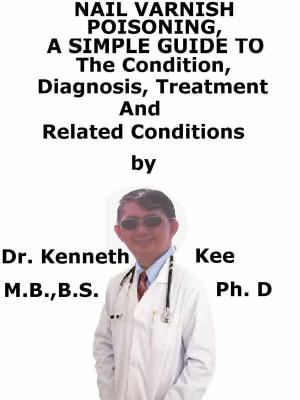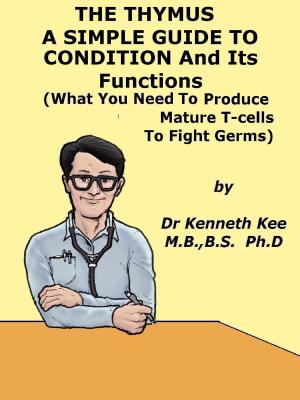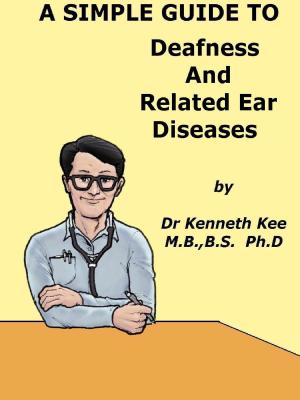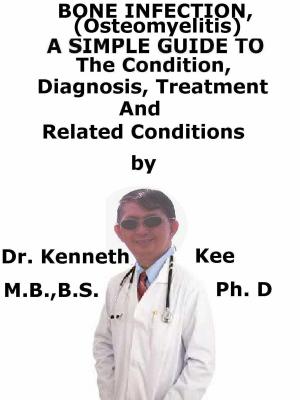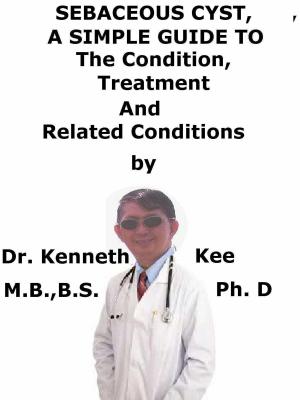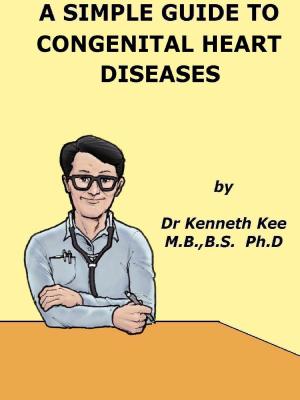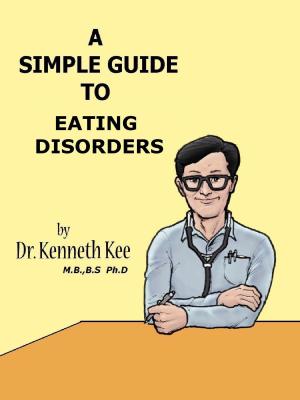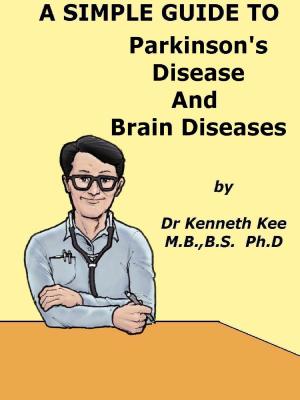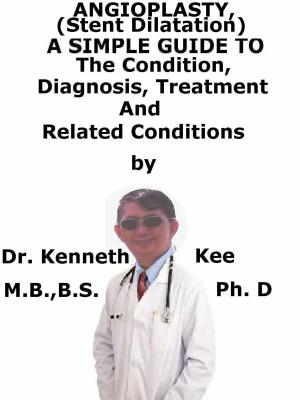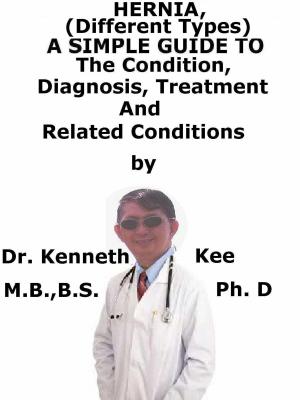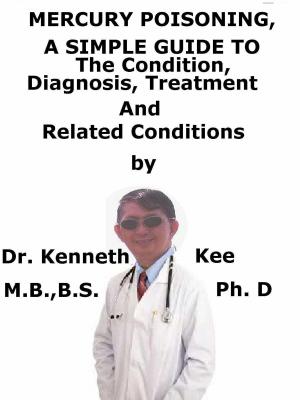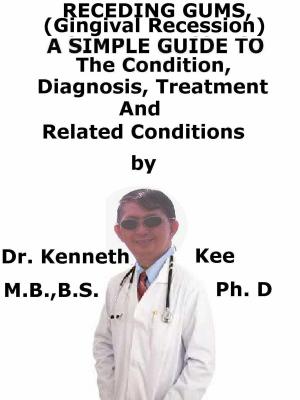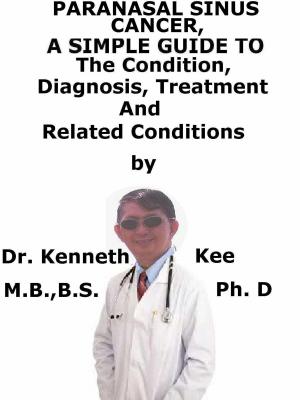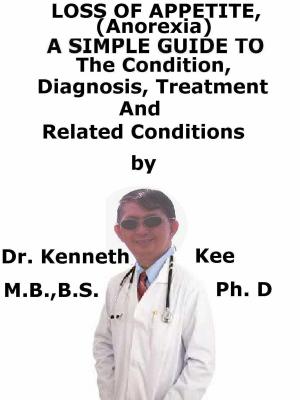Sarcopenia, (Muscle Wasting) A Simple Guide To The Condition, Diagnosis, Treatment And Related Conditions
Nonfiction, Health & Well Being, Medical, Specialties, Geriatrics, Health, Ailments & Diseases, Musculoskeletal| Author: | Kenneth Kee | ISBN: | 9781370566686 |
| Publisher: | Kenneth Kee | Publication: | October 17, 2016 |
| Imprint: | Smashwords Edition | Language: | English |
| Author: | Kenneth Kee |
| ISBN: | 9781370566686 |
| Publisher: | Kenneth Kee |
| Publication: | October 17, 2016 |
| Imprint: | Smashwords Edition |
| Language: | English |
Sarcopenia is a medical disorder known as age-related sarcopenia or sarcopenia with aging which starts in the 30s when a person starts to lose muscle mass and function.
Sarcopenia (from Greek sarx,"flesh" and penia,"poverty") is the degenerative loss of the skeletal muscle mass (0.5–1% decrease per year after the age of 50), quality, and strength linked with aging.
Sarcopenia is a part of the frailty syndrome.
Sarcopenia may occur in healthy people and does not necessarily involve malaise.
People who are physically not active can lose as much as 3% to 5% of the muscle mass every decade after age 30.
Even if the person is active, he or she will still experience some muscle reduction.
Any reduction of muscle mass requires reduction of strength and mobility.
Sarcopenia typically becomes worse at the age of 75 although it may occur in people age 65 or 80
It is a factor in the production of frailty and affect the tendency of falls and fractures in older adults.
Sarcopenia is believed to be caused by a failure in activation of satellite cell around muscle cells.
Extreme muscle loss is frequently a result of both decreasing anabolic signals, including growth hormone and testosterone, and promotion of catabolic signals, such as pro-inflammatory cytokines
Sarcopenia is characterized by:
1. A muscle atrophy (a decrease in the size of the muscle),
2. A reduction in muscle tissue quality
Symptoms of muscle loss are:
1. Musculoskeletal weakness
2. Loss of stamina,
3. Reduced physical activity
The primary treatment for sarcopenia is exercise.
In particular, the exercise resistance training or strength training (exercise that increases muscle strength and endurance with the use of resistance bands or weights) has been observed to be helpful for both the prevention and treatment of sarcopenia.
Testosterone or other forms of anabolic steroids seem to have some positive effects on muscle strength and mass.
TABLE OF CONTENT
Introduction
Chapter 1 Sarcopenia
Chapter 2 Causes
Chapter 3 Symptoms
Chapter 4 Diagnosis
Chapter 5 Treatment
Chapter 6 Prognosis
Chapter 7 Muscle Dystrophy
Chapter 8 Cerebral Palsy
Epilogue
Sarcopenia is a medical disorder known as age-related sarcopenia or sarcopenia with aging which starts in the 30s when a person starts to lose muscle mass and function.
Sarcopenia (from Greek sarx,"flesh" and penia,"poverty") is the degenerative loss of the skeletal muscle mass (0.5–1% decrease per year after the age of 50), quality, and strength linked with aging.
Sarcopenia is a part of the frailty syndrome.
Sarcopenia may occur in healthy people and does not necessarily involve malaise.
People who are physically not active can lose as much as 3% to 5% of the muscle mass every decade after age 30.
Even if the person is active, he or she will still experience some muscle reduction.
Any reduction of muscle mass requires reduction of strength and mobility.
Sarcopenia typically becomes worse at the age of 75 although it may occur in people age 65 or 80
It is a factor in the production of frailty and affect the tendency of falls and fractures in older adults.
Sarcopenia is believed to be caused by a failure in activation of satellite cell around muscle cells.
Extreme muscle loss is frequently a result of both decreasing anabolic signals, including growth hormone and testosterone, and promotion of catabolic signals, such as pro-inflammatory cytokines
Sarcopenia is characterized by:
1. A muscle atrophy (a decrease in the size of the muscle),
2. A reduction in muscle tissue quality
Symptoms of muscle loss are:
1. Musculoskeletal weakness
2. Loss of stamina,
3. Reduced physical activity
The primary treatment for sarcopenia is exercise.
In particular, the exercise resistance training or strength training (exercise that increases muscle strength and endurance with the use of resistance bands or weights) has been observed to be helpful for both the prevention and treatment of sarcopenia.
Testosterone or other forms of anabolic steroids seem to have some positive effects on muscle strength and mass.
TABLE OF CONTENT
Introduction
Chapter 1 Sarcopenia
Chapter 2 Causes
Chapter 3 Symptoms
Chapter 4 Diagnosis
Chapter 5 Treatment
Chapter 6 Prognosis
Chapter 7 Muscle Dystrophy
Chapter 8 Cerebral Palsy
Epilogue
